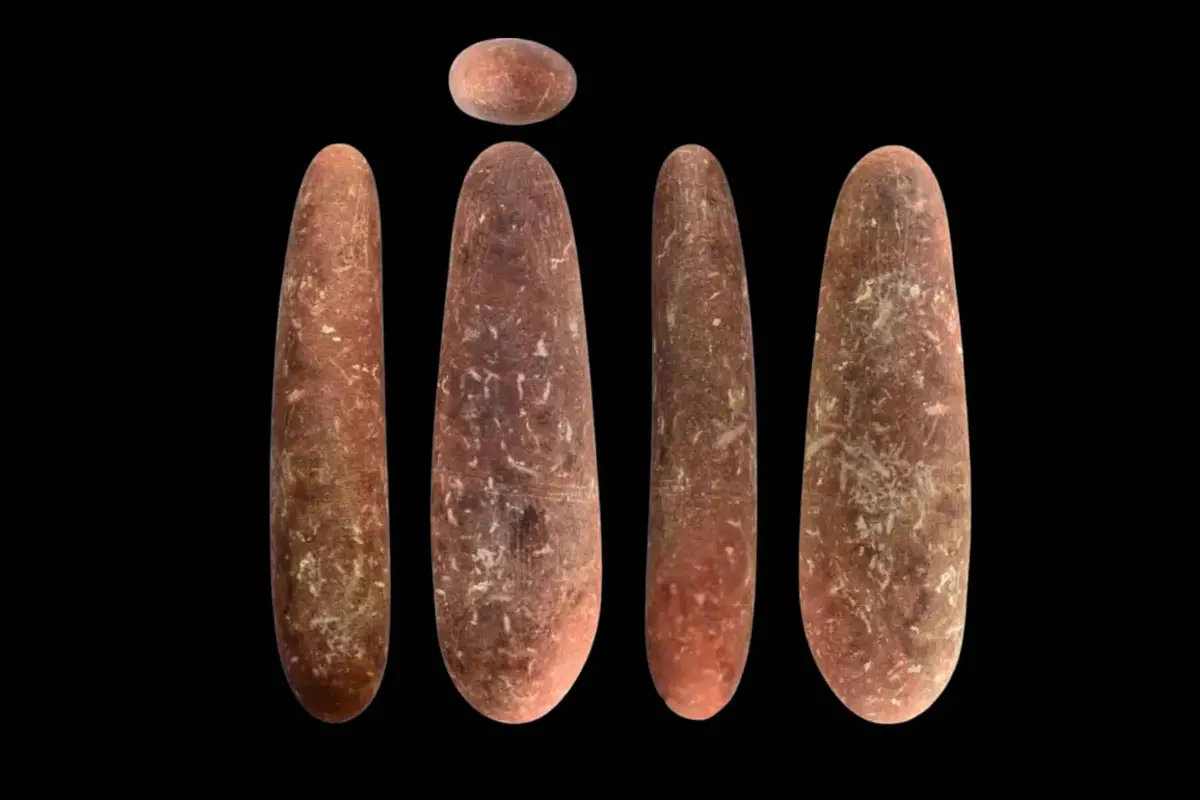A stone figurine discovered in Damjili Cave, western Azerbaijan, is providing archaeologists with new insights into the cultural and symbolic transition from the Mesolithic to Neolithic in the South Caucasus.
The figurine, discovered in a Mesolithic context and dated to between 6400 and 6100 BC – immediately before the advent of the Neolithic period – is believed to represent an anthropomorphic human figure carved from a river stone.
The carvings suggest details such as hair, a belt, and possibly a loincloth, but notably, the figurine lacks any gender-specific features. This contrasts with the predominantly female clay figurines commonly found in Neolithic context layers.
The figurine also differs from Neolithic clay figurines in both material and style. While Neolithic figurines from the region are usually seated, stylised females made of clay, the Damjili example made from stone stands upright, with simplified features and no facial detail.
This suggests not only a different medium but a distinct cultural tradition of symbolic art within the communities of the South Caucasus.
Archaeologists have associated the discovery with the early Shomutepe culture, an ancient people that once inhabited the South Caucasus region, concentrated in the Middle Kura Valley (where Damjili Cave is located), the Ararat valley, and the Nakhchivan plain regions.
A study, published in the Archaeological Research in Asia journal, challenges the assumption that symbolic culture, often represented by figurines, was introduced wholesale during Neolithization.
Instead, it points to a gradual, selective adoption of Neolithic elements, where local Mesolithic traditions continued to shape symbolic and ideological practices.
This also reflects the eventual discontinuity in the region’s portable art traditions using stone, coinciding with the full Neolithization of the South Caucasus using clay and driven by cultural influences likely introduced from the Fertile Crescent.
Header Image Credit : Archaeological Research in Asia
Sources : ScienceDirect – https://doi.org/10.1016/j.ara.2025.100611





